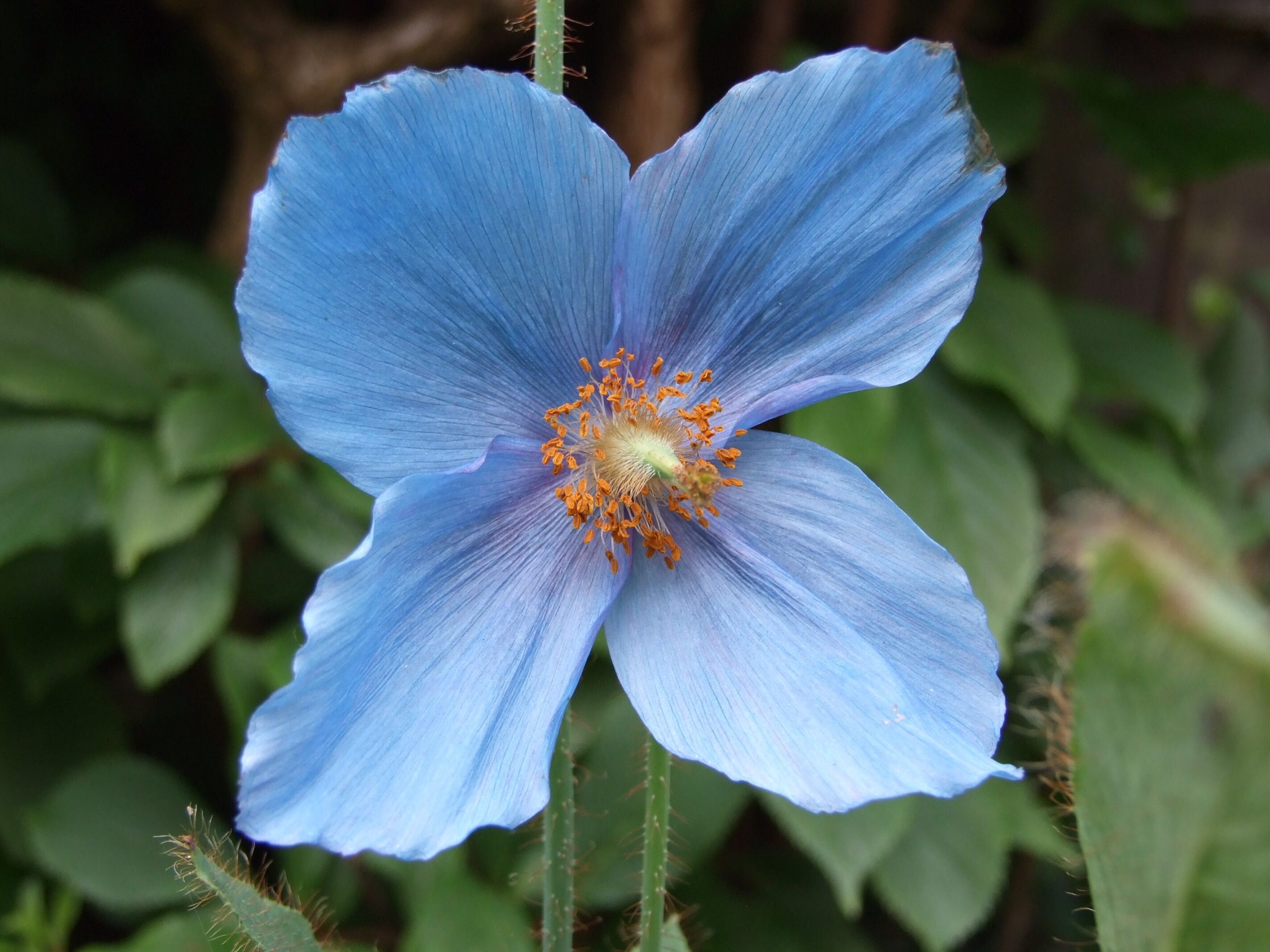The Himalayan blue poppy (Meconopsis betonicifolia) is one of the most coveted flowers for gardeners. Its stunning bright blue blooms and reputation as a challenging plant have given it an almost mythical status. While not the easiest perennial to grow, today’s hybrids and cultivars have made the Himalayan blue poppy more accessible. You can find plants for sale from several reputable online nurseries.
A Brief Overview
Native to the high altitudes of the Himalayan mountains the Himalayan blue poppy thrives in cool, moist conditions. It produces cup-shaped flowers 3-5 inches across on 2-4 foot stems in late spring to early summer. Foliage is hairy and green. The poppies require humus-rich acidic soil with good drainage and afternoon shade. Zones 3-9.
Popular hybrids like ‘Lingholm’ and the ‘Fertile Blue Group’ have improved vigor and flower production However, plants often bloom just once and die. Propagation from seed is required to maintain them
Where to Buy Himalayan Blue Poppy Plants
Here are some recommended sources for purchasing Himalayan blue poppy plants
Mail Order Nurseries
-
Phoenix Perennials – Offers Meconopsis ‘Lingholm’ potted plants shipped in spring. One of the most trusted blue poppy sources.
-
Far Reaches Farm – Sells Meconopsis ‘Lingholm’ in 4 inch pots when in stock. Limited availability.
-
High Country Gardens – Carries Lingholm strain bare root plants in fall. Reliable catalog retailer.
-
White Flower Farm – Sells the ‘Fertile Blue Group’ bare roots in autumn for spring planting.
Local Nurseries
-
Independent garden centers – Some specialty nurseries may carry blue poppy plants in spring. Call ahead to check availability.
-
Botanical gardens – Gift shops often sell Himalayan blue poppies propagated onsite. Limited quantities.
-
Native plant nurseries – Though not native, a few may carry this coveted perennial. Call to ask.
What to Look for When Buying
When purchasing Himalayan blue poppy plants, look for:
- Established root system or good sized tubers on bare root plants
- Several stems emerging from the crown
- No signs of disease, mold, or pests
- Rich green foliage with no yellowing or browning
High quality plants from reputable growers give you the best chance of success growing these challenging poppies. Avoid tiny seedlings or weak plants.
Growing Tips
Here are some tips for growing Himalayan blue poppies:
- Plant in humus-rich, fertile soil amended with compost and peat moss
- Maintain even moisture and mulch to retain water
- Site in part shade or dappled sunlight
- Provide wind protection
- Keep soil cool with shade cloth or other coverings
- Fertilize lightly in early spring and summer
- Remove spent blooms to encourage possible rebloom
- Allow for good air circulation to prevent fungal disease
- Lift and divide root clusters after several years
Enjoy This Rare Beauty
The Himalayan blue poppy is a true gem for the shade garden. With proper care and favored conditions, the brilliant blooms will reward your efforts. Seek out healthy plants from reputable sources, provide attentive care, and your chances of success with this coveted perennial will greatly increase. Soon you too can experience the magical blooms of the Himalayan blue poppy!
Item added to your cart
Couldnt load pickup availability
DESCRIPTION:
NAME: Himalayan Blue Poppy
OTHER COMMON NAMES: Tibetan Blue Poppy
SCIENTIFIC NAME: Meconopsis Betonicifolia
COLOR: Blue
PLANT SEEDS: Fall / Spring after danger of frost
PLANT HEIGHT: 24 – 36″
PLANT SPACING: 18 – 24″
BLOOM TIME: Late Spring – Early Summer
HARDINESS ZONE: 4 – 11
LIGHT REQUIREMENTS: Full Shade – Part Shade
SOIL & WATER PREFERENCES: Moist
QUANTITY: 10 Seeds
OTHER: The Himalayan Blue Poppy is one of our best-selling flowers. People love them because they are so hard to find. The big, showy blooms that are 2 to 4 inches across make them a great cut flower, and the seed pods that look so different are great for crafts or dried arrangements. They are known in folk medicine as a mild sedative and analgesic.
* FREE SHIPPING ON ALL ADDITIONAL SEEDS! PAY ONE FLAT SHIPPING FEE PER ORDER NO MATTER HOW MANY PACKS OF SEEDS YOU CHOOSE! WE HAVE MORE THAN 2,000 TYPES OF FLOWER, VINE, TREE, SHRUB, HERB, FRUIT, AND MORE!
Himalayan poppy or Meconopsis Lingholm
FAQ
Are Himalayan blue poppies hard to grow?
Where can I find Himalayan blue poppies?
Is a Himalayan blue poppy a perennial or annual?
Do blue poppies come back every year?
- A Complete Guide to Caring for Yuki Cherry Blossom Shrub - January 23, 2025
- Identifying Red Hot Poker Seeds: What to Look For When Harvesting Torch Lily Pods - January 23, 2025
- A Complete Guide to Harvesting Evening Primrose Seeds - January 23, 2025

